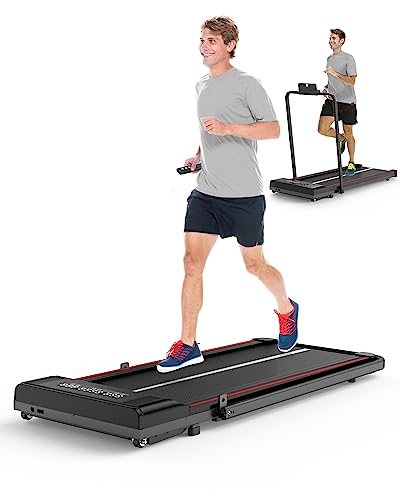A Step-By-Step Guide To Gym Treadmill From Beginning To End
Treadmills: A Comprehensive Guide to Understanding Their Functionality, Benefits, and Appropriate Selection
Introduction
Treadmills have actually ended up being a staple in modern-day fitness regimens, both in homes and health clubs worldwide. They use a convenient and efficient way to keep cardiovascular health, increase endurance, and help in weight management. This article explores the different kinds of treadmills, their benefits, features to think about when acquiring, and some FAQs to direct users in making informed choices.

Kinds of Treadmills
When it pertains to picking a treadmill, it is vital to comprehend the different types readily available in the market. Here are the primary categories:
1. Handbook Treadmills
- Mechanism: These treadmills have a basic style and count on the user's efforts to move the belt.
- Pros: More inexpensive, quieter operation, no electricity needed.
- Cons: Limited functions, might not offer the same variety of exercise intensity.
2. Motorized Treadmills
- System: Powered by a motor that drives the belt, permitting users to stroll or run at a set pace.
- Pros: Greater variety of speeds and inclines, equipped with various features such as heart rate screens and workout programs.
- Cons: More costly and might need more maintenance.
3. Folding Treadmills
- Mechanism: Designed for those with restricted space, these treadmills can be folded for simple storage.
- Pros: Space-saving, often motorized, flexible features.
- Cons: May be less long lasting than non-folding designs.
4. Industrial Treadmills
- System: High-quality machines created for usage in fitness centers and physical fitness centers.
- Pros: Built to endure heavy usage, advanced functions, often include guarantees.
- Cons: Pricey and not ideal for home use due to size.
5. Curved Treadmills
- System: A special design that permits users to propel the belt utilizing their own energy.
- Pros: Offers a more natural running experience, promotes much better running kind.
- Cons: More expensive and can be noisier.
| Treadmill Type | Pros | Cons |
|---|
| Manual | Inexpensive, no electricity required | Restricted functions |
| Motorized | Range of speeds, advanced functions | Maintenance required |
| Folding | Space-saving, frequently motorized | May do not have toughness |
| Commercial | Built to last, professional-grade features | Costly |
| Curved | Natural running experience, promotes great kind | Higher price |
Advantages of Using Treadmills
Treadmills provide many advantages that can add to one's general health and wellness goals. Some of these benefits consist of:
- Convenient Workouts: Treadmills enable users to work out inside despite weather.
- Cardiovascular Health: Regular usage can enhance heart health by increasing endurance and promoting healthy circulation.
- Weight Management: Effective for burning calories, which aids in weight loss and management.
- Personalized Workouts: Users can manage speed, slope, and period to develop customized exercise experiences.
- Security: Treadmills provide a predictable surface, reducing the danger of falls compared to outside running.
- Multifunctional: Many treadmills included functions like heart rate monitors, exercise programs, and even home entertainment systems.
Selecting the Right Treadmill
When picking a treadmill, potential purchasers ought to think about a number of crucial factors:
Features to Consider:
- Motor Power: Typically measured in horse power (HP), a motor strength of at least 2.5 HP is advised for serious runners.
- Belt Size: A longer and larger belt accommodates various stride lengths, offering convenience throughout exercises.
- Incline Settings: Adjustable slope features replicate outside hill running and can increase exercise strength.
- Weight Capacity: Ensure the treadmill can support the user's weight for safety and durability.
- Console Features: Look for easy to use dashboards, exercise programs, and Bluetooth compatibility for streaming music or other functions.
Spending plan Considerations
- Under ₤ 500: Entry-level manual treadmills suitable for casual walkers.
- ₤ 500 - ₤ 1,500: Mid-range motorized treadmills that use more functions and better durability.
- ₤ 1,500 - ₤ 3,000: High-end designs with advanced technology, larger motors, and longer guarantees.
- Over ₤ 3,000: Commercial-grade treadmills ideal for frequent use in health clubs or training centers.
Frequently Asked Questions (FAQs)
1. How typically should I use a treadmill?
It is suggested to utilize a treadmill a minimum of 3 to 5 times a week, including different strength levels for best outcomes.
2. Can I slim down by using a treadmill?
Yes, constant usage of a treadmill can add to weight loss, especially when combined with a balanced diet and strength training.
3. What is the best speed to walk on a treadmill for novices?
A speed of 3 to 4 miles per hour is an ideal variety for newbies. It's essential to begin sluggish and gradually increase speed as convenience and stamina enhance.
4. Do I require to utilize a treadmill if I currently run outdoors?
Utilizing a treadmill can provide additional benefits, such as controlled environments and varied exercises (slope, periods) that are not always possible outdoors.
5. How do I preserve my treadmill?
Regular upkeep includes lubricating the belt, cleaning the deck and console, and checking the motor for ideal performance.
Treadmills are necessary tools for those aiming to boost their physical fitness levels in a controlled and hassle-free way. With different types available, understanding their functions and benefits is important for making a notified purchase. By thinking about individual exercise needs, area availability, and spending plan restraints, people can find the most suitable treadmill uk sale (www.playtube.ro) that fits their way of life. Integrating treadmill workouts into a balanced fitness routine can lead to better health results and a pleasurable exercise experience.

